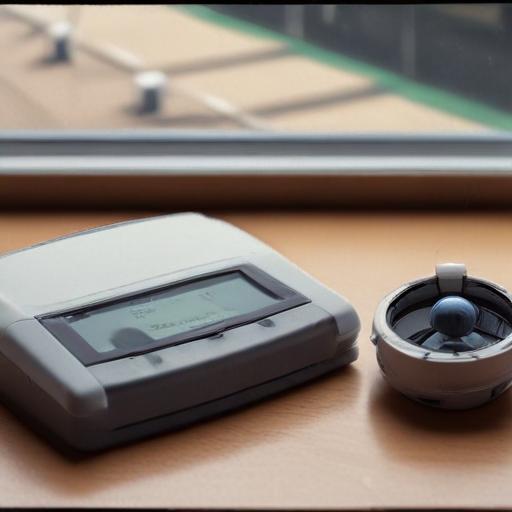Brandon Woodruff’s return to the mound has the same edge it always had, even after the shoulder surgery that cost him a season. In Milwaukee, the pitcher’s stoic glare and relentless drive remain intact, a trait Brewers manager Pat Murphy likens to John Wayne. Woodruff doesn’t wear a cowboy hat, but his determined stare and unwavering approach speak for themselves as he pieces together a return to form.
Since missing most of last season, Woodruff has leaned on what he does best rather than what his radar gun says about him. In a recent clash with the New York Mets, he faced Juan Soto for the second time in a game that had already tipped in favor of the opponent. With the Brewers trailing 2-0 in the third, Woodruff, ahead 0-2 in the count after two fastballs in the zone, doubled down on his four-seam fastball despite Soto’s earlier homer off it. Velocity had dipped—his four-seam sitting around 93 mph, the slowest of his career by a wide margin—but Woodruff trusted the pitch and located it where he wanted. The result: a 94-mph fastball, the hardest he had thrown that day, landing in Contreras’ glove for a strikeout against one of the game’s elite hitters.
Juan Soto recalled facing Woodruff in the playoffs a few years back and being struck by the electricity of his fastball. Today, Soto still respects the pitcher, noting that Woodruff is “still really, really good.” Woodruff, for his part, believes his velocity will rebound in time, but in the meantime he has added a cutter and has seen his changeup play up. He’s also throwing more strikes and using a familiar mix—sinker and four-seam fastball roughly 60 percent of the time—while evolving the rest of his mix. Through seven starts, totaling 39 1/3 innings, Woodruff sits at a 2.06 ERA, a 0.74 WHIP and 49 strikeouts.
Brewers pitching coach Chris Hook loves what he’s seen, describing Woodruff’s growth in terms of the pitcher he’s become. “There’s been a processing and an understanding of who he is and what he does, and he’s come out the other side of this rehab process in a better spot,” Hook said. Murphy has been equally impressed, calling the results a “clinic” at times.
Woodruff’s road back was far from easy. A slower velocity prompted concerns during May and June rehab starts, compounded by a sore right ankle and a line drive that struck his elbow—setbacks that delayed his return. Yet his patience and persistence paid off. He returned in Miami on July 6, the first major-league appearance since Sept. 23, 2023, a span of 652 days. He dominated early, allowing two hits and one run over six innings with eight strikeouts on 70 pitches, his average around 92-94 mph and his hardest pitch clocked at 95.7 mph. In his next outing, he fanned 10 over 4 1/3 innings against the Nationals.
The Brewers have watched the anticipated “shock” of his comeback fade into a steady, productive rhythm. Woodruff credits careful preparation, reading swings, and understanding how opponents plan to attack him. He’s learning to trust a 2.0 version of himself—one still aggressive, but more surgical in execution.
From the dugout to the clubhouse, the message is consistent: he’s not chasing the past or a specific velocity threshold. He’s competing, trusting his instincts, and enjoying the process. “If I come in here and harp on, ‘Oh, man, my average fastball is only 93, how can I get this guy out,’ that’s not going to do me any good,” Woodruff said. With two kids adding to his perspective, he’s grown more appreciative of the game and what it offers each day.
The Brewers, awash in baseball’s best record at 79-45, are counting on Woodruff to be a defining piece of a championship-caliber run. The contract includes a mutual option for 2026 at $20 million, but Woodruff says he’s focused on the present and the work that lies ahead rather than the future. “This game isn’t going to last forever,” he reflected, noting he’s enjoying competing in a different way and valuing the balance that comes with family.
What’s next for Woodruff is a continued blend of old instincts and new adaptations as he navigates the unpredictable arc of a comeback. If the last couple of years have taught him anything, it’s that resilience and clarity of purpose can open doors even when the path isn’t exactly how you drew it up.
Summary: Brandon Woodruff’s return from shoulder surgery has been marked by a fearless, adaptable approach that tolerates lower velocity while leveraging improved control and multiple pitch refinements. With the Brewers riding one of the league’s best records, his continued evolution offers a hopeful blueprint for a pitcher who refuses to be defined by a single metric and who remains committed to competing at the highest level.
Commentary and value add: This storyline reinforces a broader trend in pitching where pitchers adapt to physical limits by refining pitches and sequencing, not just maxing velocity. For fans, it highlights the importance of patience in rehab, the impact of mental resilience, and how a clubhouse can rally around a star who embodies perseverance. For fantasy enthusiasts and analysts, Woodruff’s trajectory suggests a potential for upside even if peak velocity isn’t fully back yet, given his command, added cutters, and improved changeup.
Note: No negative sentiment detected; the piece emphasizes resilience, progress, and a positive outlook for Woodruff and the Brewers.
